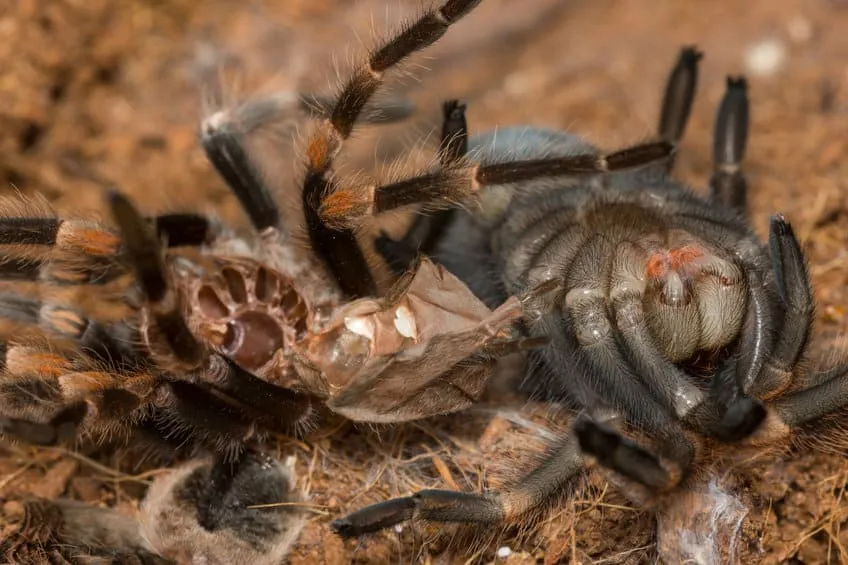What is Tarantula Molting
Molting is a natural and essential process for tarantulas, a type of arachnid. It’s how they grow and replace their old exoskeleton, which is essentially their outer skeleton. Unlike humans who grow internally, tarantulas must shed their outer layer to increase in size. This process allows them to shed parasites, regenerate lost limbs, and maintain overall health. A molting tarantula can be an amazing thing to witness if you are prepared. Understanding this process will help you be the best tarantula owner possible. It is also a key time for the tarantula because it can be very vulnerable.
The Molting Process Explained
The molting process, also known as ecdysis, is a complex one. It begins with the formation of a new, soft exoskeleton underneath the old one. The tarantula then starts to detach itself from the old exoskeleton. This can take a considerable amount of time, during which the tarantula often lies on its back. During this time it slowly works itself out of the old skin. The tarantula will also pump fluids in to split the exoskeleton open. Once the old exoskeleton splits, the tarantula wriggles free, leaving behind the shed skin, which is a complete replica of the tarantula, including the fangs. After the molt, the new exoskeleton is soft and vulnerable, hardening over several days.
Pre-Molting Signs You Should Know
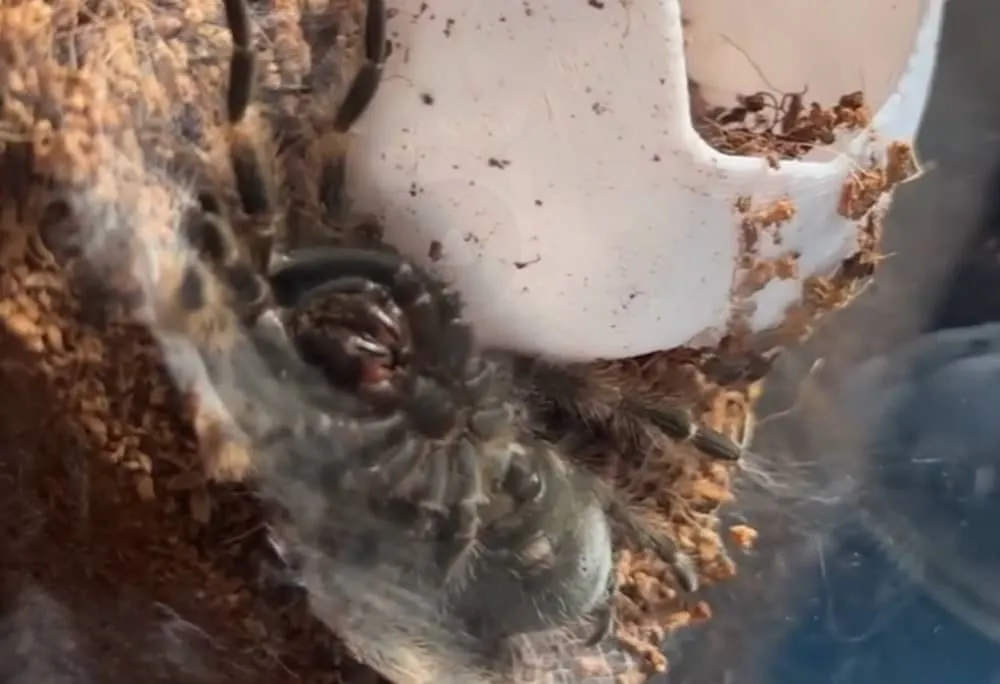
Recognizing the signs that your tarantula is about to molt is crucial for its safety and well-being. This will also prevent unnecessary handling, which could be deadly. Several behavioral and physical changes indicate an impending molt. Being aware of these signs allows you to provide the best possible care during this vulnerable period. Observe your tarantula regularly, as molting frequency varies based on age, size, and species. With time, you’ll become familiar with your tarantula’s pre-molting behavior and be able to anticipate the process.
Lethargy and Loss of Appetite
One of the first signs is a change in the tarantula’s behavior. They often become lethargic, spending more time in their hide or resting in unusual positions. They may also refuse food for weeks or even months before molting. This loss of appetite is a clear indication that the tarantula is preparing for a molt. The tarantula might also become less active. This is because the tarantula is conserving energy for the molt. The spider will be vulnerable and will not want to waste energy.
Color Changes
The tarantula’s coloration might appear duller or darker than usual. The colors may also seem faded or muted. The new exoskeleton, developing underneath, alters the appearance of the outer layer. Some species may exhibit specific color changes. This is a visual cue that a molt is approaching. The intensity of these changes can vary depending on the species. Therefore, familiarizing yourself with the typical coloration of your tarantula is essential for noticing subtle shifts. Keep a close eye on these color changes, as they can be a reliable indicator of an impending molt.
Abdomen Darkening
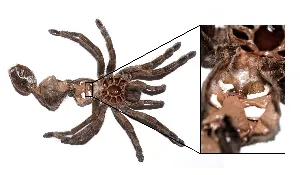
The abdomen of the tarantula may appear darker, and it may also look shiny. The area between the abdomen and the carapace (the back part of the body) might show a visible separation, indicating that the old exoskeleton is detaching. This is a clear sign that the molting process is underway. This darkening and separation are due to the formation of the new exoskeleton beneath the old one. As the new exoskeleton develops, it pushes the old one away. The darkness is caused by the new skin underneath. This darkening is a good sign that your tarantula is about to molt.
How to Help Your Tarantula During Molt
During a molt, your tarantula is extremely vulnerable. Although you can’t directly assist the molting process, there are several things you can do to create a safe and supportive environment. Your primary role is to minimize stress and ensure the tarantula’s safety. Avoid any unnecessary disturbances, and make sure the habitat conditions are optimal. The goal is to let the tarantula go through the natural molting process as safely as possible, without external intervention.
Provide a Safe Environment
Remove any potential hazards from the enclosure that could harm your tarantula during the molt. This includes items like heavy decorations, sharp objects, or anything that could fall and injure the tarantula. Ensure the substrate is clean and free of any debris. Make sure the enclosure has a secure lid to prevent escapes. Place the enclosure in a quiet, low-traffic area where the tarantula won’t be disturbed. A stable environment is very important because the tarantula’s vulnerability increases during the molt.
Avoid Disturbing Your Tarantula
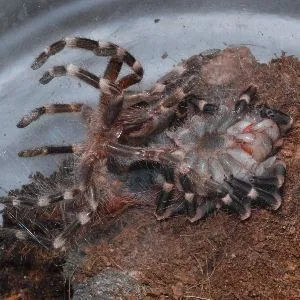
Refrain from handling or interacting with your tarantula during the molting process. Any disturbance, even a gentle touch, can stress the tarantula and potentially interfere with the molt. Avoid loud noises, bright lights, and vibrations near the enclosure. Do not attempt to feed the tarantula. Patience is key – allow the process to unfold naturally. Observe from a distance and let the tarantula be. Interfering can be fatal, so it’s important to be hands off.
Maintain Proper Humidity
Maintaining the correct humidity levels is crucial during a molt. If the environment is too dry, the exoskeleton may not shed properly. This can lead to a failed molt. Research the specific humidity requirements for your tarantula species and adjust the enclosure accordingly. Use a hygrometer to monitor the humidity. This can be done by misting the enclosure with water. Ensure proper ventilation to prevent mold growth. This will prevent the tarantula from drying out, which is very important during the molt.
What to Do After the Molt
Once your tarantula has successfully molted, there are a few important steps to take to ensure its recovery. Provide a stable environment and monitor the tarantula’s behavior closely. Avoid any actions that could stress the spider. Allowing the tarantula to fully recover is essential for its health and well-being after this physically demanding process.
Remove the Exoskeleton
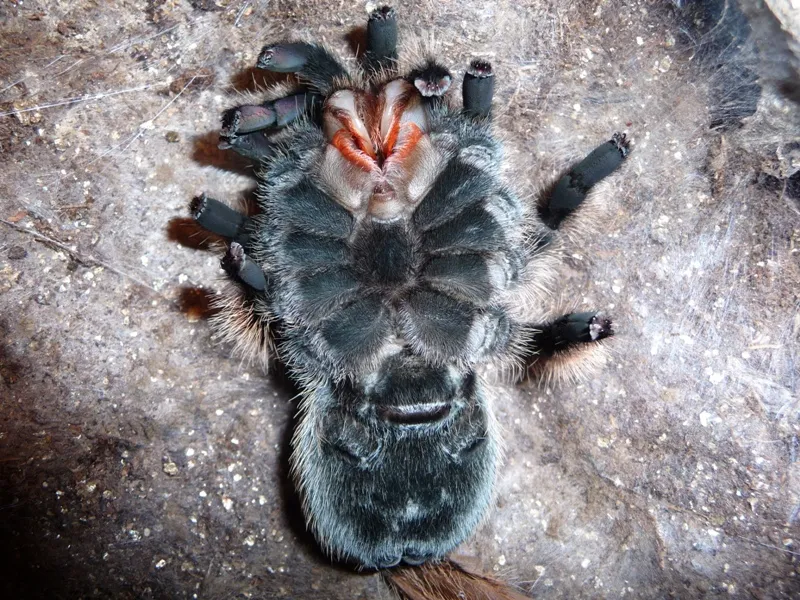
After the molt, you can remove the old exoskeleton from the enclosure. The timing of this depends on the species and the environment, but usually, it’s best to wait a day or two for the new exoskeleton to harden. Leaving the old exoskeleton in the enclosure for too long can lead to mold growth. When removing the shed skin, be gentle and avoid disturbing the tarantula. Dispose of the exoskeleton properly, keeping in mind that it is a complete replica of the tarantula.
Wait Before Feeding
Do not attempt to feed your tarantula immediately after it molts. The new exoskeleton is soft, and the tarantula’s fangs need time to harden. Wait at least a week, or until the fangs are fully hardened. This allows the tarantula to regain its strength and build up its appetite. When you do offer food, start with a smaller prey item and observe whether the tarantula is ready to eat. Make sure the prey is no bigger than the tarantula’s abdomen. Feeding too early can be detrimental. The tarantula is particularly vulnerable after a molt.
Molting Problems to Watch Out For
While molting is a natural process, complications can arise. Being aware of potential problems and their signs can help you take action if needed. Be vigilant and observe your tarantula for any unusual behavior or signs. A timely response can sometimes save a tarantula experiencing a difficult molt. If you see any problems, it is best to consult with an expert.
Failed Molts

A failed molt occurs when a tarantula struggles to shed its old exoskeleton. This can be due to several factors, including low humidity, nutritional deficiencies, or health problems. Signs of a failed molt include the tarantula being stuck in its old skin, with parts of the exoskeleton remaining attached. It might have trouble extracting itself. This is a serious issue that can be fatal. If you notice signs of a failed molt, consult with a veterinarian or an experienced tarantula keeper. It might be best to take the tarantula to the vet.
Leg or Fang Damage
During the molting process, a tarantula can sometimes experience damage to its legs or fangs. These limbs are delicate and can become caught in the old exoskeleton. This might result in a broken leg or, in severe cases, the loss of a fang. While tarantulas can regenerate limbs over several molts, this is a stressful situation. Keep the environment as safe as possible. Handle any damage to the legs or fangs with care. Consult with a veterinarian or an experienced tarantula keeper for assistance. The tarantula may need help with feeding if a fang is damaged.
Why Molting is Important for Tarantulas
Molting is fundamental to a tarantula’s life cycle and survival. It is not merely a shedding of the skin, but a process of growth, repair, and renewal. Through molting, tarantulas grow larger, regenerate lost limbs, and get rid of parasites. The process allows them to replace damaged parts of their body. Understanding the significance of molting helps you appreciate the complexity of these fascinating creatures. A molting tarantula is a vulnerable but resilient creature. By providing a suitable environment and observing your tarantula, you contribute to its health and well-being.
